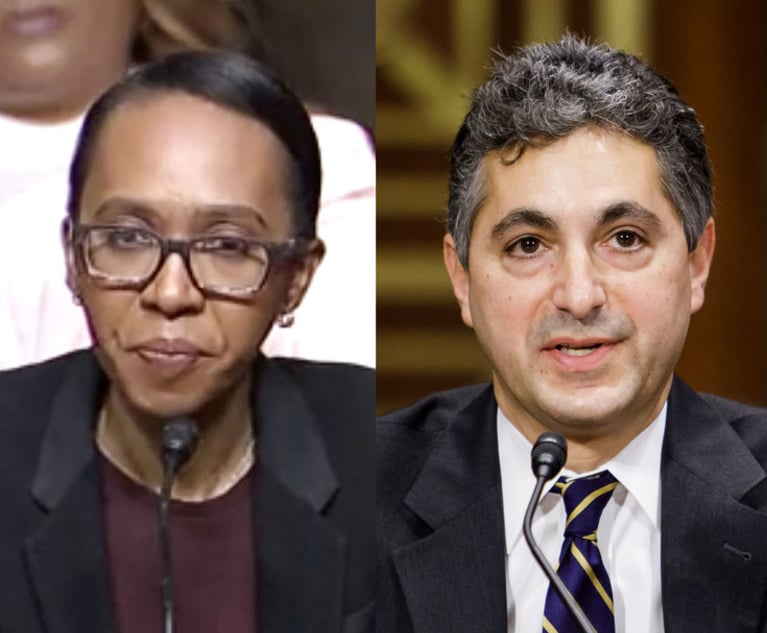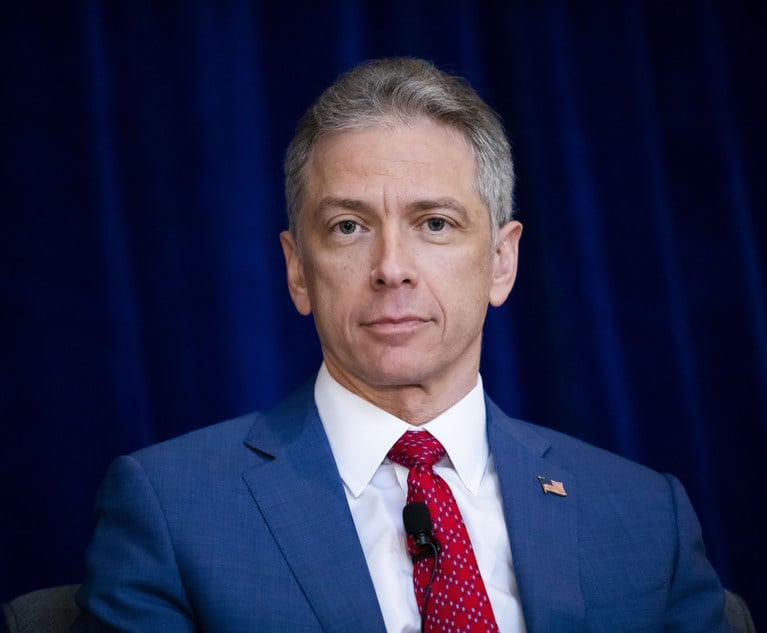Skilled in the Art: Breaking Down a $752M Verdict with Morgan Chu + The Arthrex En Banc Petitions Are In + Is Supreme Court Clearing the Decks for a Section 101 Landing?
A conversation with Irell & Manella partner Morgan Chu about the $752 million jury verdict he just helped engineer last week.
December 17, 2019 at 10:26 PM
16 minute read
Welcome to Skilled in the Art. I'm Law.com IP reporter Scott Graham. Here's what's cooking today:
• A conversation with Irell & Manella partner Morgan Chu about the $752 million jury verdict he just helped engineer last week.
• Both parties and the government have filed petitions for en banc review of the Federal Circuit's Arthrex decision on the appointment of PTAB judges.
• Alex Kozinski's copyright appeal seems to get some traction at Ninth Circuit.
• Chrimar Systems' push for the Federal Circuit to reconsider the Fresenius finality rule comes up short.
• Is the Supreme Court putting Section 101 cert petitions on hold ahead of Athena Diagnostics decision?
As always, you can email me your feedback and follow me on Twitter.
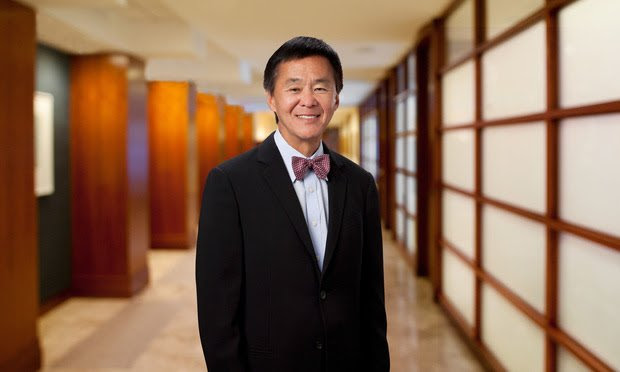 Irell & Manella partner Morgan Chu.
Irell & Manella partner Morgan Chu.
Morgan Chu Breaks Down $752 Million Cancer Treatment Verdict
Irell & Manella has just snagged another nine-figure patent infringement verdict. Last month the firm scored a $200 million verdict for the United Services Automobile Association in the Eastern District of Texas. On Friday it was a $752 million verdict for Juno Therapeutics and Memorial Sloan-Kettering Cancer Center in a dispute before U.S. District Judge James Otero in the Central District of California.
Jurors awarded a $585 million upfront payment and a 27.6% running royalty for Kite Pharmaceuticals' infringement of a ground-breaking treatment known as CAR T-cell therapy. Irell partner Morgan Chu led a trial team that also included Irell partner Alan Heinrich and associate Elizabeth Tuan, and Jones Day partner Andrea Weiss Jeffries and associate Sarah Geers, among others. Munger Tolles & Olson and Fish & Richardson represented Kite, which also has received counsel along the way from Gibson Dunn & Crutcher, Orrick Herrington & Sutcliffe and Sterne Kessler Goldstein & Fox.
On Monday I caught up with Chu, who is also coming off a win last week in his first Supreme Court appearance (though he didn't have a lot of time to savor it).
Skilled in the Art: Congratulations on your Supreme Court win. You must have been excited.
Morgan Chu: Yeah. Early Wednesday morning, I'm getting prepared for closing argument and a couple of people on our team came by and said, "Oh Morgan, did you hear?" And I said, "Hear what?" And they said, "You just won your case in the Supreme Court." And then I ran off to court to give my closing argument.
SITA: How did the jury verdict break down?
MC: It had five basic questions. Three of them covered invalidity defenses: the certificate of correction, enablement and written description. A fourth question asked whether there was willful infringement, and the fifth question was damages.
SITA: I take it all three invalidity questions were decided in your favor. How about the willful infringement question.
MC: Also decided in our favor.
SITA: Will you be moving for enhanced damages?
MC: There's a whole series of different motions we might make, and we haven't made any decisions on that or any other other motions.
SITA: Can you explain in lay terms what the technology is about and how Kite was infringing it?
MC: So this was the first living drug ever, certainly the first living drug to treat cancer. Cancer cells have this ability to trick our immune system into thinking they're friendly cells as opposed to foreign invaders. So our immune system doesn't go and attack cancer cells.
So what Dr. [Michel] Sadelain and his colleagues at Sloan-Kettering did was, they came up with a way to re-engineer a patient's own T cells. They take the T cells out of the patient's blood stream in much the same way someone gives blood. They put the rest of the blood back into the patient's body. They make some changes to the genetic makeup of those T cells.
That patient has a particular kind of cancer that has a particular kind of DNA sequence, and all of the T cells are now retrained, as if they're special forces, to go and attack that patient's cancer.
While they're killing the cancer cells, of course many of the T cells themselves are dying. But here's the most amazing part of it, and why it's a living drug: The [re-engineered] T cells send signals to the rest of the patient's immune system that say, "We want reinforcements."
And then the patient's immune system begins to make brand new T cells that don't exist in nature, that the patient never made by themselves previously. And they're the exact same as the re-engineered T cells. And then the body makes millions and millions of these special forces T cells. And they look for and immediately kill the cancer.
SITA: How effective is the treatment?
MC: So early clinical trials, every one of the patients is about to die. The physicians and scientists know that because these are patients with a particular cancer, and every other known treatment has failed them. And on average they'll all pass away in 12 weeks. If it was a loved one of yours or mine and there was one chance in 20, you'd say let's go for it, and it would be a miracle.
And today, both what Juno is doing and what Kite has done with Sloan-Kettering's patented technology is that about 50% appear to have complete remission. In other words, so far as the scientists can detect, the cancer's been killed. And it's all been done with one treatment. [It's not a] recurring treatment that needs to be administered every day, several times a day, every week or whatever it is. This living drug works by one treatment to a patient.
SITA: This was a case where your opponent had taken a swing at the Patent Trial and Appeal Board and lost. Was that one of the keys in this litigation?
MC: You're right. They petitioned to invalidate the patent and all of the challenged claims were affirmed by the patent trial and appeal board. So they couldn't raise any of the issues on patent invalidity based on prior art before the jury.
SITA: Can you explain the certificate of correction issue?
MC: When the patent was pending in the patent office, the applicant, Sloan-Kettering, noticed that there was a discrepancy, and filed what's called a request for continuing examination, or RCE. A way to think about it is that Sloan-Kettering was attempting to patent a sequence of amino acids. They're given numbers. They're part of a protein that's called CD28. And the amino acids that they were seeking to patent included those beginning at 114 and ending at 220. So that was the intent.
But there was a discrepancy in the original application, so someone might think, "Oh, what they're attempting to patent is 113 through 220." Sloan-Kettering spotted this before the patent issued, filed the RCE, and said we want to make clear, we're trying to patent 114 through 220.
The Patent Office requires that there be an electronic form of the sequence listed. So everything that was submitted to the Patent Office in the first instance [of the RCE] was correct, both in hard copy and electronically, but then the Patent Office computer says we can't read this. Would you please resubmit it and reformat it? So Sloan-Kettering submits it again, a second time, and everything is correct. It's being submitted for 114 through 220. The Patent Office says thank you, but electronically, we're still having trouble with the formatting. Can you resubmit it again?
So the third resubmission, we believe the person just grabbed the wrong electronic file, and resubmitted it with 113 through 220. So then the patent issues with the wrong sequence listing. But the RCE document itself, easily read by any human being, says, "We want 114 through 220."
Sloan-Kettering later discovers this and files for a certificate of correction. There's an established set of rules and policies at the Patent Office. They examine the request, they find that it meets the legal requirements, and then they release the certificate of correction. All of this, including the final certificate of correction with the correct sequence listing of 114 through 220, that's all done by 2013.
SITA: Before the litigation started?
MC: It's four years before the first act of infringement by defendant Kite. So we said they weren't puzzled, because they knew what the certificate of correction said.
They were trying to argue that this clerical error should control the patent rights. And they were also trying to argue, I think, that somehow it was unfair to them, as if they didn't know what the correct sequence listing was.
SITA: During the course of the lawsuit, Juno was acquired by Celgene, and then Celgene in turn was acquired by Bristol-Myers Squibb, and Kite was acquired by Gilead Sciences. Did all of those ownership changes come into play at all in the litigation?
MC: Certainly, Gilead's acquisition of Kite came in. And there was evidence on how Gilead valued the one Kite product that was at issue [in the trial], called Yescarta. In their SEC filing, Gilead valued Yescarta at $6.2 billion.
The fact that Celgene acquired Juno came in. Before Celgene acquired Juno, they entered into a deal where Celgene would get rights to certain of Juno's CAR-T technologies, but only for sales outside the United States. As a part of that deal, the cash up-front payment that Celgene paid to Juno was $1 billion. That's a real-world license, same basic area of technology, relating to CAR-T, but only for sales outside the United States.
What was not supposed to come in was any reference to Bristol-Myers Squibb acquiring Celgene. But the other side had one of their witnesses blurt it out.
SITA: Why was that not supposed to be mentioned?
MC: Not relevant. How does it help anyone decide whether any of the three defenses are good or bad, or willful infringement, or the amount of damages? I think the only reason why the other side would want it in was to say, "Oh, there's really a big company on the other side called Bristol-Myers Squibb."
SITA: Gilead has a good track record of wriggling out of big judgments in post-trial motions—your firm helped them do it in the Idenix case. Are you expecting more big battles to come?
MC: I don't know the overall record of Gilead or for that matter any other company, but I'm familiar with that one data point. As far as what to expect ahead, I always assume the other side is going to make every post-trial motion they can make before the trial court, and make every argument that that they think can be persuasive on appeal. So whether it's Gilead or someone else, I assume that's what they'll do.
SPONSORED BY ALM
Boundless Opportunities: Being Ready for What Happens Next
Speaking to the increasing mobility and accelerating agility of the future-focused legal professional, Richard Robinson, director of legal operations and litigation Support at Toyota, is one of many industry thought leaders set to drive the business of law forward at Legalweek 2020. READ MORE
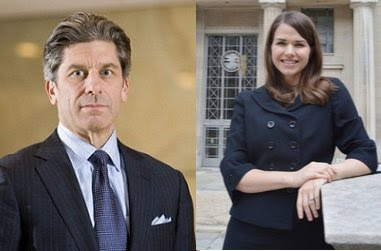 Gibson Dunn partner Mark Perry and DOJ attorney Melissa Patterson.
Gibson Dunn partner Mark Perry and DOJ attorney Melissa Patterson.
The Case[s] for Going En Banc in Arthrex
Arthrex, Smith & Nephew and the Justice Department have made their formal cases for the Federal Circuit to reconsider its Oct. 31 ruling that made the PTAB's 275 administrative patent judges unconstitutionally appointed and then constitutionally appointed again.
Specifically, Judge Kimberly Moore wrote for the Federal Circuit in Arthrex v. Smith & Nephew that PTAB judges are principal officers, and therefore, they should have been appointed by the president and confirmed by the Senate. But the court further held that, going forward, it can reinterpret the Patent Act as making PTAB judges at will employees, which will render them inferior officers. That solves the constitutional problem, but it means that some 200 PTAB opinions that aren't yet final on appeal must be reheard by a different panel of PTAB judges.
Smith & Nephew has added Gibson Dunn & Crutcher partner Mark Perry to its Wolf Greenfield & Sacks team. They and the government (DOJ and PTO) are homing in 35 U.S.C. 6(c), a provision in the America Invents Act (AIA) that empowers the PTO director to designate the members of panels who will hear validity challenges.
"Under Section 6(c), the Director could decide that particular APJs are unsuitable for designation on any panel—for instance, because the Director lost confidence in them," Wolf Greenfield partner Charles Steenburg writes for Smith & Nephew. Such an APJ could be—and could always have been—terminated under existing employment laws that promote "the efficiency of the service." That gives the director sufficient supervisory control to render APJs inferior officers and avoids the need to remand any cases, Smith & Nephew argues.
The government, meanwhile, argues that Section 6(c) also gives the director power over PTAB decisions, by allowing the director to designate and de-designate panel members at will. The Arthrex panel cautioned that de-designating a panel member midstream would pose a due process problem. But the government, in a brief signed by Melissa Patterson of DOJ's civil division appellate staff, sees a pot and a kettle here: "Parties can undoubtedly receive full and fair hearings even where Senate-confirmed officers may remove adjudicators at will during the proceedings," Patterson writes. "Indeed, that is the very constitutional remedy the panel imposed here."
DOJ also is renewing its call for the Federal Circuit to limit any holding it might reach to parties that raised the Appointments Clause issue before the Patent Trial and Appeal Board, which would drastically reduce the number of pending cases affected.
Arthrex, meanwhile, says the Federal Circuit's panel decision didn't go far enough. That's because it leaves APJs "the power to issue a Final Written Decision without meaningful review by a principal officer," writes Anthony Cho of Carlson, Gaskey & Olds.
"Though the Arthrex panel severed one provision in an effort to address the constitutional concerns, the statute cannot be saved and must be ruled unconstitutional," Cho writes. "Accordingly, the Final Written Decision here must be vacated and the case dismissed."

Kozinski Cites Judge Wardlaw to Judge Wardlaw
"Good morning. May it please the court. I'm Alex Kozinski, and I represent David Zindel."
So began former Chief Judge Alex Kozinski's return to the Ninth Circuit as an advocate in the copyright case Zindel v. Fox Searchlight Pictures. My ALM colleague Ross Todd had a snappy rundown Monday on Kozinski's arguments. The judge resigned from the court in December 2017 after a string of female law clerks, and in one instance a former judicial colleague from a different court, accused him of sexual misconduct.
Kozinski's argument seemed to go well, as Ninth Circuit Judges Kim Wardlaw and Kenneth Lee and visiting Judge Matthew Kennelly expressed concern about copying allegations like Zindel's being dismissed on the pleadings. Zindel accuses Fox Searchlight Pictures and others of copying from his father Paul Zindel's play, "Let Me Hear You Whisper," in the Academy Award winning movie "The Shape of Water."
I wrote last week that Kozinski had cited one of his own copyright decisions in his brief to the court, but he came out of the gate Monday quoting from a 2018 opinion that said "dismissal of a complaint for lack of substantial similarity before any discovery is virtually unheard of."
"That's not me speaking," Kozinski told the court. "This is from a concurrence in a decision by this court last year reversing the very same district judge who dismissed the case here."
That concurrence was written by Judge Wardlaw. It "has a great deal of wisdom to it, and I commend it to the court's attention," Kozinski said.

No En Banc, and No Dissents, on Finality Issue
I've featured a couple of times Chrimar Systems' request that the Federal Circuit convene en banc to reconsider the Fresenius finality rule, which allows for PTAB decisions on invalidity to wipe out earlier district court judgments.
So I will note that that the Federal Circuit rejected Chrimar's request on Friday, without comment or dissenting opinion.
The win goes to Jackson Walker partners Leisa Talbert Peschel and Chris Cravey, who've represented respondent ALE USA throughout the appeal. Solo practitioner Andrew Dhuey and Rob Greenspoon of Flachsbart & Greenspoon represented Chrimar in its push for en banc consideration.
"It was very disappointing not to have any dissents filed on the denial of our en banc petition," Dhuey said by email. "My best guess is that the five judges who have overtly called for reconsideration of Fresenius saw no point in repeating the points they made in prior dissenting opinions."
Is the High Court Putting 101 Cases on Hold?
Dhuey points me to what could be an extremely interesting development at the Supreme Court.
As previously reported, the solicitor general has called on the high court to take up the patent eligibility case Athena Diagnostics v. Mayo Collaborative Services. The court has scheduled a cert vote Jan. 10.
Dhuey notes that in the meantime, other Section 101 cases appear to be getting put on hold. For example, Garmin USA's case against Cellspin Soft was fully briefed for a cert vote as of Nov. 6. The Supreme Court noted in its Nov. 14 docket that a cert vote has been "rescheduled."
Power Analytics v. Operation Technology was fully briefed as of Nov. 1. No cert vote scheduled yet.
The cert petition in Dhuey's case, Reese v. Sprint Nextel, was filed Nov. 6, and the respondents waived opposition Nov. 21 and 22.
Dhuey intends to file a supplemental brief Wednesday asking that the court hold his case pending its decision in Athena, given the solicitor general's recommendation that the court reevaluate its Section 101 jurisprudence dating back to 2010′s Bilski v. Kappos. If the court does take Athena, he asks that the court grant, vacate and remand Reese in light of any significant changes that get made to Section 101 law.
I'm guessing we'll see a lot of briefs like this in the coming weeks.
That's all from Skilled in the Art today. I'll see you all again on Friday.
This content has been archived. It is available through our partners, LexisNexis® and Bloomberg Law.
To view this content, please continue to their sites.
Not a Lexis Subscriber?
Subscribe Now
Not a Bloomberg Law Subscriber?
Subscribe Now
NOT FOR REPRINT
© 2025 ALM Global, LLC, All Rights Reserved. Request academic re-use from www.copyright.com. All other uses, submit a request to [email protected]. For more information visit Asset & Logo Licensing.
You Might Like
View All
Skilled in the Art With Scott Graham: I'm So Glad We Had This Time Together
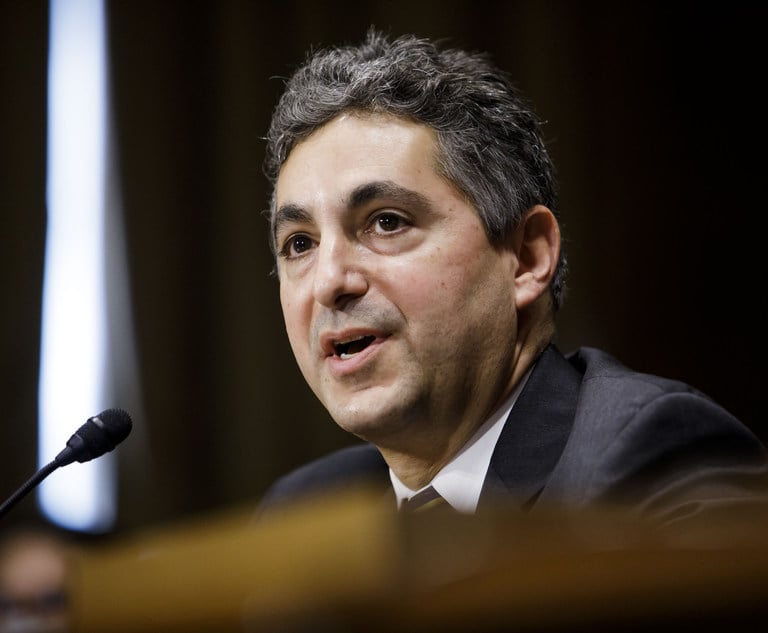
Design Patent Appeal Splinters Federal Circuit Panel + Susman Scores $163M Jury Verdict + Finnegan Protects Under Armour's House
Law Firms Mentioned
Trending Stories
- 1NJ Jury Awards $4.5M After Woman Trips on Carpet
- 2Blake Lively Is Sued by Texas Crisis Specialist in Latest 'It Ends With Us' Lawsuit
- 3Pa. High Court to Decide Whether Flight in a High Crime Area Can Result in an Investigative Stop
- 4EB-5 Immigration Investor Program: a Win-Win Program, or Is It?
- 5People in the News—Feb. 6, 2025—Unruh Turner, Fox Rothschild
Who Got The Work
J. Brugh Lower of Gibbons has entered an appearance for industrial equipment supplier Devco Corporation in a pending trademark infringement lawsuit. The suit, accusing the defendant of selling knock-off Graco products, was filed Dec. 18 in New Jersey District Court by Rivkin Radler on behalf of Graco Inc. and Graco Minnesota. The case, assigned to U.S. District Judge Zahid N. Quraishi, is 3:24-cv-11294, Graco Inc. et al v. Devco Corporation.
Who Got The Work
Rebecca Maller-Stein and Kent A. Yalowitz of Arnold & Porter Kaye Scholer have entered their appearances for Hanaco Venture Capital and its executives, Lior Prosor and David Frankel, in a pending securities lawsuit. The action, filed on Dec. 24 in New York Southern District Court by Zell, Aron & Co. on behalf of Goldeneye Advisors, accuses the defendants of negligently and fraudulently managing the plaintiff's $1 million investment. The case, assigned to U.S. District Judge Vernon S. Broderick, is 1:24-cv-09918, Goldeneye Advisors, LLC v. Hanaco Venture Capital, Ltd. et al.
Who Got The Work
Attorneys from A&O Shearman has stepped in as defense counsel for Toronto-Dominion Bank and other defendants in a pending securities class action. The suit, filed Dec. 11 in New York Southern District Court by Bleichmar Fonti & Auld, accuses the defendants of concealing the bank's 'pervasive' deficiencies in regards to its compliance with the Bank Secrecy Act and the quality of its anti-money laundering controls. The case, assigned to U.S. District Judge Arun Subramanian, is 1:24-cv-09445, Gonzalez v. The Toronto-Dominion Bank et al.
Who Got The Work
Crown Castle International, a Pennsylvania company providing shared communications infrastructure, has turned to Luke D. Wolf of Gordon Rees Scully Mansukhani to fend off a pending breach-of-contract lawsuit. The court action, filed Nov. 25 in Michigan Eastern District Court by Hooper Hathaway PC on behalf of The Town Residences LLC, accuses Crown Castle of failing to transfer approximately $30,000 in utility payments from T-Mobile in breach of a roof-top lease and assignment agreement. The case, assigned to U.S. District Judge Susan K. Declercq, is 2:24-cv-13131, The Town Residences LLC v. T-Mobile US, Inc. et al.
Who Got The Work
Wilfred P. Coronato and Daniel M. Schwartz of McCarter & English have stepped in as defense counsel to Electrolux Home Products Inc. in a pending product liability lawsuit. The court action, filed Nov. 26 in New York Eastern District Court by Poulos Lopiccolo PC and Nagel Rice LLP on behalf of David Stern, alleges that the defendant's refrigerators’ drawers and shelving repeatedly break and fall apart within months after purchase. The case, assigned to U.S. District Judge Joan M. Azrack, is 2:24-cv-08204, Stern v. Electrolux Home Products, Inc.
Featured Firms
Law Offices of Gary Martin Hays & Associates, P.C.
(470) 294-1674
Law Offices of Mark E. Salomone
(857) 444-6468
Smith & Hassler
(713) 739-1250



